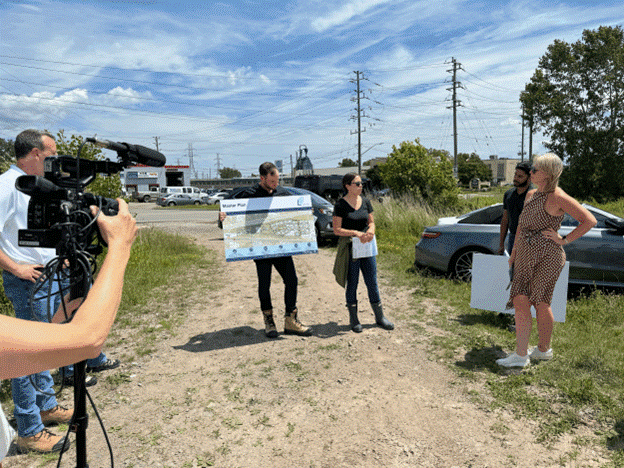Opinion.
The November 10th decision by the Province of Ontario approving Regional Official Plan Amendment 48 (ROPA 48) included approval of boundary changes to the downtown Burlington Urban Growth Centre (UGC) that Burlington City Council wanted. This is something that Mayor Meed Ward has worked long and hard for, but will it provide the desired outcome that the mayor was looking for?
Justification for UGC boundary changes, often mentioned by the mayor, was that the UGC has already served its intended purpose and has done its job, as the minimum population and employment density target — 200 residents and jobs per hectare — will be achieved by 2031. The evidence for this claim was provided by city staff in a memo (find it at https://www.getinvolvedburlington.ca/9250/widgets/36046/documents/39336) that is included in the city’s official plan documents (find it here: https://www.getinvolvedburlington.ca/official-plan-2019). The memo reported that the minimum target would be met only by including existing development applications, a detailed list of which is included in the memo.
It is important to note that the new official plan is still not in effect and is unlikely to be so until appeals against it are resolved.
The relevance of the year 2031 is that it represents the end of the previous Ontario planning period. The new Ontario planning period represented by ROPA 48 goes to 2051 and will likely require Burlington to increase its population by 60,000 to 80,000 between now and 2051. Mayor Meed Ward argued, supported by council and many in the community, that it would be preferable to increase population in Burlington around GO stations rather than downtown. This would be partially accomplished by changing the UGC boundary to focus growth around the Burlington GO station area.
When the province approved city council’s request for the UGC boundary to be changed, it included the following condition:
“Sections 80 to 80.2 continue to apply to applications for official plan amendments, zoning by-law amendments and draft plans of subdivision or condominium approvals made prior to the approval by the Minister of Municipal Affairs and Housing of Amendment 48 to this Plan if the lands that are the subject of the application were within an Urban Growth Centre prior to the Minister’s approval of Amendment 48.”
This means that all development applications located within the original UGC boundary that were submitted before the November 10 change in boundaries will be considered as if the original UGC is still in place: that is, to meet that original UGC target of 200 residents and jobs/hectare.
Clearly, the province accepted the evidence provided by the city that applications received prior to the November 10th approval decision were required to satisfactorily achieve the minimum target of 200 residents and jobs by 2031 that justified the shift of the UGC to lands around the Burlington GO Station.
The province gave Mayor Meed Ward exactly what she asked for!
It is interesting to note that the mayor issued a statement regarding the approval by the Ontario Land Tribunal (OLT) of one of the buildings included on that list of developments required to get to 200 residents and jobs per hectare downtown. “This is a devastating and shocking decision imposed on our community, which completely disregards the vision of residents, council and staff for this area. And so, Council will be examining all of our options for a review of this OLT decision.”
The development that Mayor Meed Ward seems to want to fight against makes you wonder how the OLT decision disregards the vision of council and staff when not only was it consistent, but it was also approved and fundamentally necessary to achieve moving the UGC boundaries. The very same memo mentioned in this article was included in the evidence presented to OLT that caused the mayor to be “devastated” and “shocked.”
Did Mayor Meed Ward, who has served as mayor or councillor for 11 years, not understand the implications of council decisions that she worked for, or did she simply want to avoid inconvenient facts?
Even though the approach is not politically popular, it is better to work with the building industry rather than fight them at every turn, especially when the city needs these developments to meet its long-standing commitment to the minimum UGC target, which facilitated moving UGC boundaries. This is especially true when possibly millions of dollars of hard-earned taxpayer funds are being spent by the city to conduct legal battles for over 40 appeals of the Official Plan at the OLT.
The mayor has put herself in a difficult position. She can keep fighting development and blame others for the situation that she and the city are in or accept responsibility, tell the truth, and lead the city by directing city staff to work with the developers to shape and form development that provides necessary homes for future residents.




